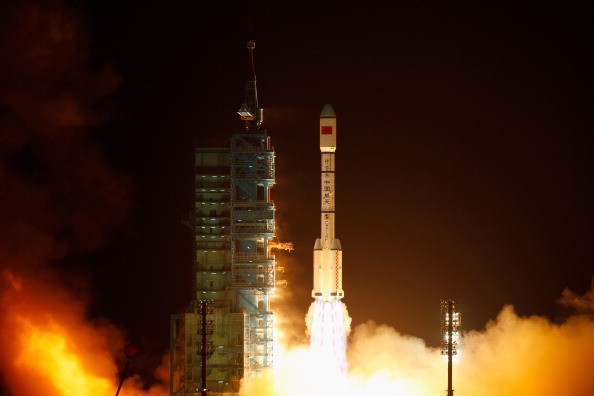China has apparently lost control of the unmanned 8-ton space station called Tiangong-1 giving rise to concerns that its hardware could hurtle towards Earth in an uncontrolled fireball. Tiangong-1 space station is China's first ever foray into space and was launched in 2011.
Initially, it was expected that Tiangong-1 would return to Earth after fulfilling its objectives in a controlled crash into the ocean. However, loss of control over the "space lab," has given rise to fears that it may cause extensive damage once it hits Earth.
Without China reportedly losing control over the space lab, it is apprehended that its fall may demolish communities in inhabited areas because of the extreme heat produced from re-entry, in addition to the eight tons of metal that comes along with it. Tiangong-1 is expected to return towards the end of 2017, but China is silent on when and where it might happen, Space.com reported.
Usually, most parts of space junk burn up prior to reaching Earth. However, owing to its huge size possibilities are high that Tiangong-1 will reach Earth before melting away. An amateur astronomer, Thomas Dorman, who has been tracking the space station's movements, is of the view that Tiangong-1 is on a crash course towards Earth, but China has not been doing anything to stop it.
In an interview with the publication from his home in El Paso, Texas, Dorman said, "If I am right, China will wait until the last minute to let the world know it has a problem with their space station." He added that it will really be a bad day if the space lab's pieces crashed in a populated area.
Tiangong-1, which means "Heavenly Place," was expected to be the launch pad for a larger space station that would have been operational by 2020. While Tiangong-1 executed docking exercises between 2011 and 2013. However, it has been floating in an in-orbit "operation management phase" since then.
Tiangong-1 has acquired heaps of application and science data between 2011 and 2014, according to China Manned Space Engineering. According to the organization, data collected by the space lab is very important on several accounts, including mineral resources investigation, hydrologic and ecological environment monitoring, ocean and forest application, land use, urban thermal environment monitoring and emergency disaster control.
However, following an operational orbit of 1630 days, Tiangong-1 terminated its data service. The flight orbit of Tiangong-1, which will come down steadily in the coming months, is under continuous and close monitoring, and eventually, the orbiter will burn up in the atmosphere.
On the contrary, Dorman counters China's claims the space lab will burn up in the atmosphere. CMSE officials also claimed that the "telemetry link" to Tiangong-1 had failed, giving rise to apprehensions that the space vehicle will at some point turn into an unrestrained fiery fall.
Watch the launch of the first Chinese space station Tiangong-1 below:



























